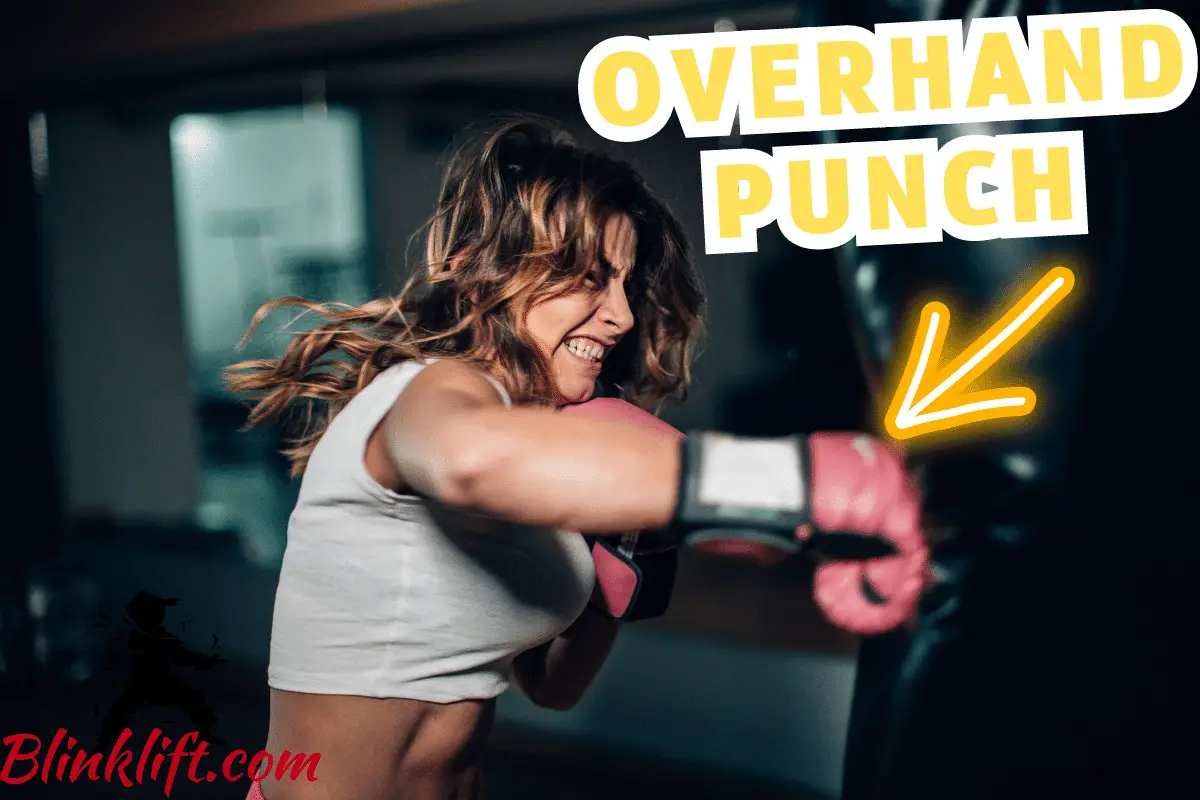Mastering the Overhand Punch, one of the most popular and effective strikes in Muay Thai, doesn’t require a lot of knowledge. In fact, I’ve packaged everything you need to know in this article alone; so if you finish reading it, you’ll be able to start working toward perfection.
But first, let’s see what the Overhand Punch is and how to perform it:
The Overhand Punch is a striking technique commonly used in Muay Thai. It is a powerful punch that is thrown in a looping motion, aiming to strike the opponent from above and land with significant force.
I love this strike because it’s special. It includes two unique traits that make it more effective and surprising. The first is the motion it includes, which isn’t a straight line but a looping motion. Furthermore. you start from above your head (hence the name) and hit your opponent anywhere that’s exposed, such as below or to the side of his guard.
This is why it can be extremely effective to learn to use it effectively.
So now, let’s dive into the first part of this article: how to execute the Overhand Punch flawlessly.

How to Overhand Punch Perfectly
This part of the article will likely be the most important and beneficial one to you. That’s because you’ll be able to start working toward Overhand Punch perfection with this section only.
However, this article will be divided into 3 parts, which are as follows:
- How to Overhand Punch perfectly:
- Overhand Punch Combinations
- Overhand Punch Variations
You can follow the links to skip to the 2nd and 3rd parts.
So let’s talk about how to use this section optimally and suitably. I see two suitable options here. The first is bookmarking or saving this article somewhere to return to it whenever you want to work on your Overhand Punch.
The second option is to write down notes you want to work on. Then, once you want to practice, you’ll be able to know what you want to work on.
So without further introduction, let’s dive into the first part of perfecting your Overhand Punch: your fighting stance.
#1 – Stance
The first point we’ll review starts as early as how you stand. Indeed, your fighting stance will dictate how much power you’ll be able to generate with your Overhand Punch. So you want to work on it before you even think about moving into the more advanced techniques, such as learning other variations and combinations.
Start in a balanced Muay Thai stance, with your feet shoulder-width apart. Your lead foot should be slightly turned inward, and your hands should be up, guarding your face. Where you place your guard on your head depends on which stance you’re using, whether a traditional, boxing, or any other type of fighting stance.
I wrote a complete guide dedicated to perfecting your fighting stance, which you can read by following this link.
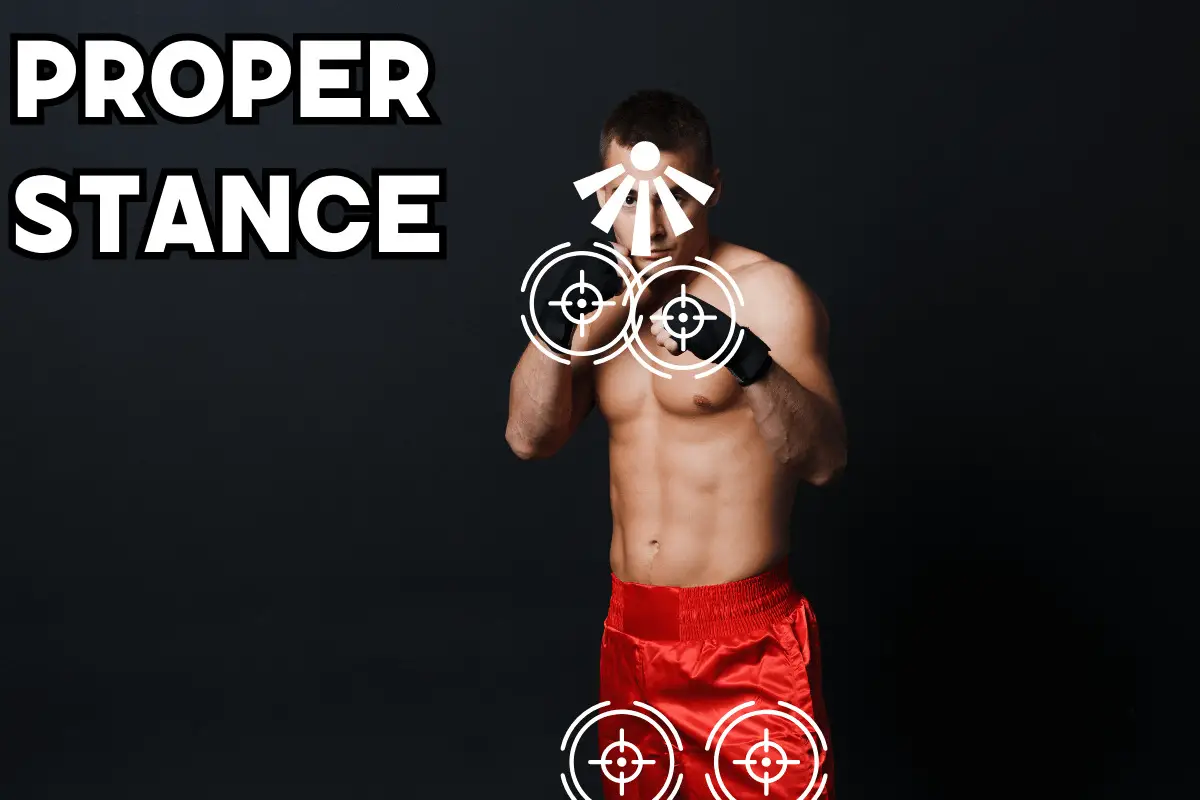
#2 – Setup
The second point we’ll review is the setup you create for this type of punch. Now, it’s important to understand that this point isn’t less important because it doesn’t relate to the punch itself. Rather, you’re going to find much more success when you prepare the Overhand Punch correctly.
To throw an Overhand Punch, you need to create an opening or distract your opponent. This can be done by feinting with a jab or using footwork to set up the punch.
You have many options here. The primary lesson you want to understand is to set up the punch by not going for it. Instead, you want to start with something else. My two most beloved ways of distracting your opponent are by faking a hit or going for a Jab/Double Jab.
So make sure to set up the Overhand Punch before you throw one.
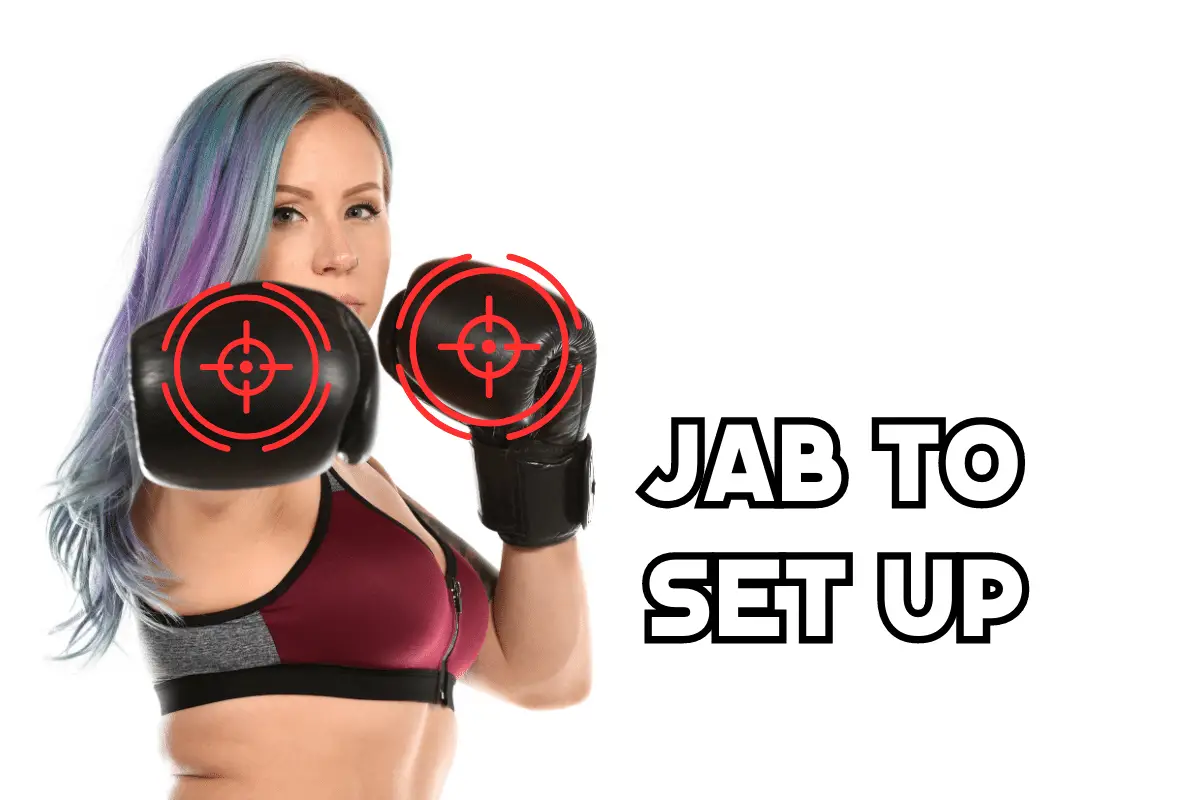
#3 – Hip Motion
The next point we’ll review is the #1 mistake Muay Thai fighters make when they throw the Overhand Punch. Pay close attention to ensure you’re not a part of the many who make the same mistake.
Point #3 is proper hip motion. You want to use your hips for generating the most force. Of course, you’ll also be using your arm, but it shouldn’t be the primary force driver. So using your hips, shoulders, and momentum—is going to end up helping you generate much more force overall.
As you initiate the punch, pivot your lead foot and shift your weight onto your back foot. Simultaneously, drop your lead shoulder slightly and rotate your torso. This generates power for the punch.
Without following what I’ve described in the previous paragraph, you’ll have an extremely difficult time generating a lot of force. Make sure to “charge up” this strike before throwing it (but don’t exaggerate!)
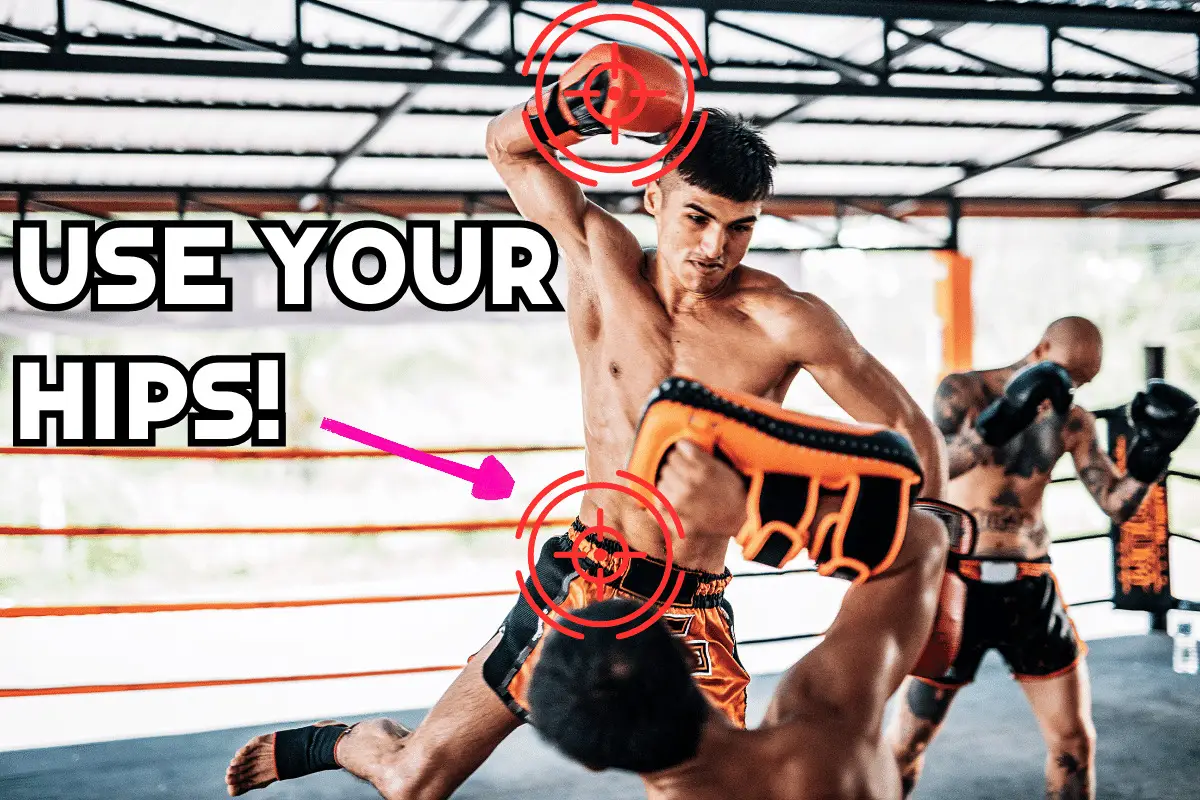
#4 – Arm movement
The next thing we’ll review is how you want to move your arm when you throw the Overhand Punch. Frankly, it’s the most basic thing you need to know to execute this strike flawlessly. However, some Muay Thai fighters tend to forget about it and skip it entirely. You must avoid doing that to ensure you’re performing it correctly.
And yes, before you strive to perform it flawlessly, you must perform it correctly.
Your rear and lead hands will be the ones delivering the Overhand Punch. As you rotate your torso, bring your rear arm in a wide arc over the top, aiming to strike your opponent’s head from above.
The wide arc motion is extremely important. Without it, your opponent is going to be much more likely to defend your offense. And then, the worst-case scenario is that he counters, which you’re unlikely to defend since you’re more vulnerable now.
#5 – Punch trajectory
The next point is similar to the previous one but provides more details on the same issue. First, you must understand your goal with this strike. Your goal is to confuse your opponent by (1) throwing a punch circularly and (2) hitting him over his guard or shoulder.
Once you understand what you most want to achieve after you finish throwing this strike, you’ll be more likely to make it work.
The Overhand Punch follows a looping trajectory, moving in a semi-circular motion from the outside to the inside. The punch should travel over your opponent’s guard or shoulder, targeting their temple or the side of their head.
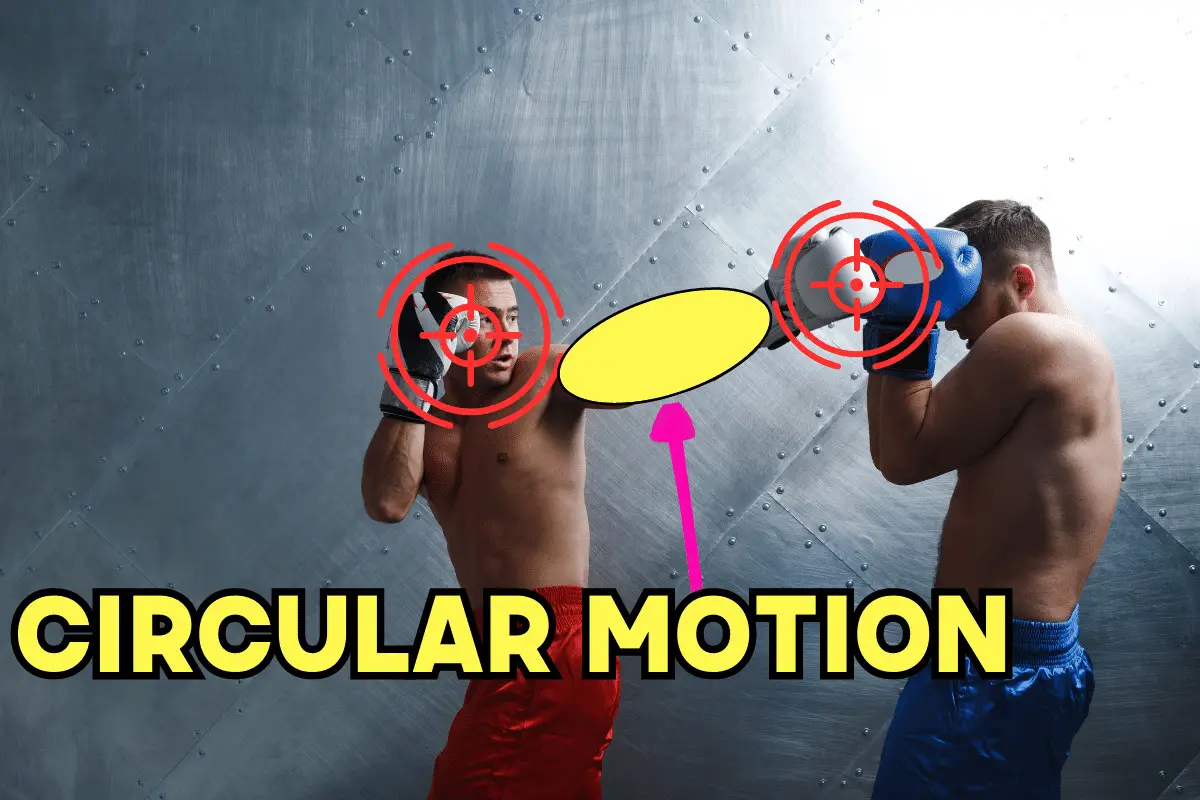
#6 – Follow-through
As you extend your arm, make sure to fully extend your elbow, wrist, and fingers for maximum impact. Imagine punching through the target rather than just hitting it. Keep your non-punching hand up for defense.
#7 – Defense and Recovery
And for the last point of this article, let’s cover the most forgotten part of Muay Thai, and this is a phenomenon that occurs in all martial arts. We want to not only focus on our offense but also our defense. If we throw an Overhand Punch and you don’t defend yourself in the process, then your opponent will counter and is likely to land a fierce punch.
So this is what you must do to throw a flawless Overhand punch.
After throwing the punch, quickly retract your arm back to your guard position. Maintain your balance and be prepared to defend or follow up with additional strikes.
Indeed, sometimes more offensive moves equal defense. Your opponent will not be able to attack if you constantly attack. This should make a lot of sense to you by now.
So focus on defense as much as offense and you’ll be good to go on your journey toward Overhand Punch perfection!
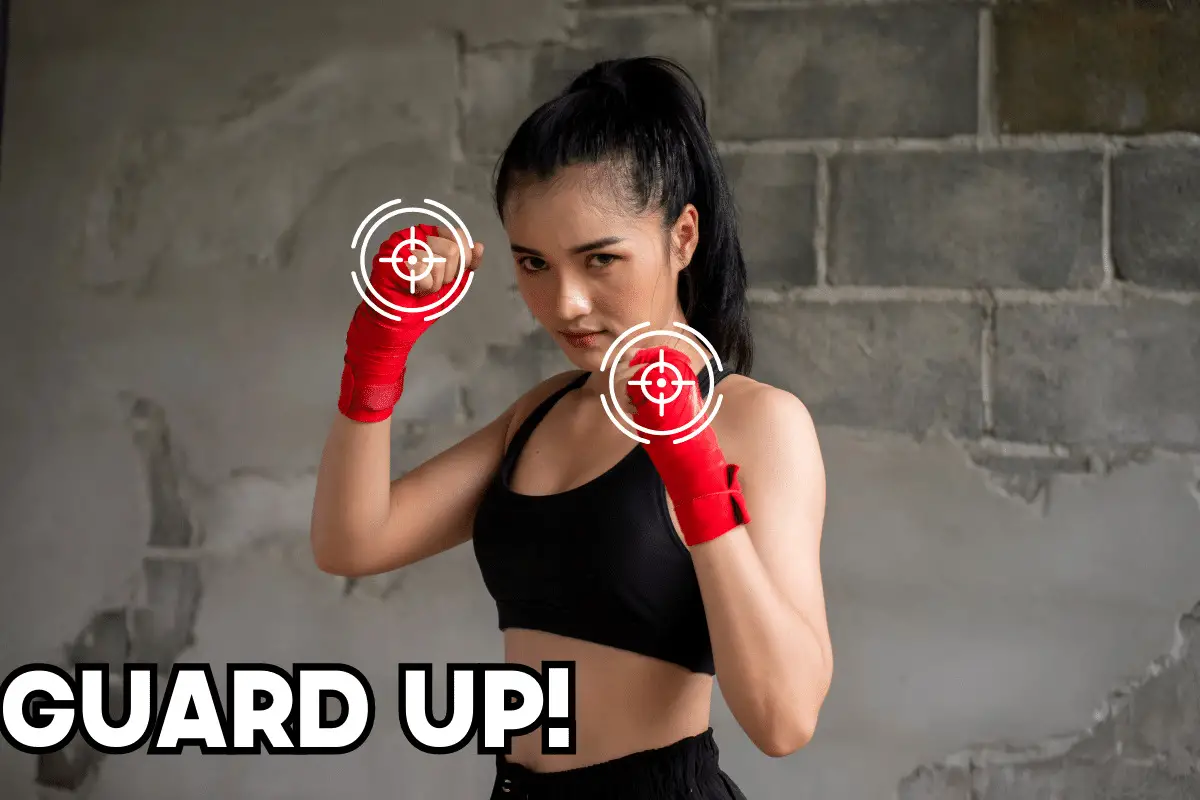
Overhand Punch Combinations (Muay Thai)
Combinations are one of the most important skills in Muay Thai. Not only does it allow you to cause more damage, but it also allows you to do so quickly.
Think how much worse the fighting world would be if you had to execute only one technique at a time; no party would be able to cause enough damage to finish the fight, which is why knowing to combine techniques—is critical.
And this is what this section is about. So now that you know how important combinations are, here are the best ones with the Overhand Punch.
- Jab-Overhand:
- Start with a quick jab (lead hand) to disrupt your opponent’s guard.
- Follow up immediately with an overhand punch (rear hand) to strike over the top of their defense.
- Jab-Cross-Overhand:
- Begin with a jab (lead hand) to set up your combination and gauge the distance.
- Follow it with a powerful cross (rear hand) to create an opening.
- Finish with an overhand punch (rear hand) to deliver a surprise strike from above.
- Lead Hook-Rear Cross-Overhand:
- Initiate with a lead hook (lead hand) targeting your opponent’s head or body.
- Transition into a rear cross (rear hand) to exploit any openings created by the hook.
- Finish with an overhand punch (rear hand) to come over the top and land a powerful strike.
- Teep-Overhand:
- Start by executing a front push kick or teep (lead leg) to create distance or disrupt your opponent.
- As your opponent reacts or moves backward, follow up with an overhand punch (rear hand) to capitalize on their retreat.
- Clinch Break-Overhand:
- If you find yourself in a clinch with your opponent, use a technique to break free, such as a forearm push or collar tie release.
- As you disengage from the clinch, quickly transition into an overhand punch (rear hand) to catch your opponent off guard.

Overhand Punch Variations
For the last part of this article, we’ll review variations of the Overhand Punch. Now, this is something you want to understand, so pay close attention.
Diversifying your skill set and learning more and more techniques—is never a bad thing. Of course, if you continue learning without actually practicing and honing your technique, you won’t progress.
However, if you continue learning, the odds of you not progressing if you’re taking the time to practice what you learn—are slim. Therefore, it’ll be worth investing time into learning more variations of everything you learn. Here are some of the more common ones that you want to familiarize yourself with:
- Standard Overhand Punch – Utilizes a looping motion
- Rear Uppercut Overhand – When you use your rear hand to hit the chin
- Lead Overhand Punch – When you use your lead hand
- Rear Overhand Punch – When you use your rear hand
- Overhand to the Body – When you hit the body
Final Words
To finish off this article, the Overhand Punch is most effective at close to mid-range distances. It can be a potent technique when used correctly, but like any strike, it requires practice, proper technique, and timing to be effective.
Training with a qualified Muay Thai instructor or coach is highly recommended to learn and refine this technique safely and effectively. You can also follow this link to read about more types of punches that are popular and effective in Muay Thai!
Of course, you must not stop here. The fact that you finished reading this article doesn’t mean you’re a perfect fighter. Rather, training and implementing what you have learned is your next step.
So get on the mat and start practicing!
You can also sign up for our Email Newsletter to keep up with our blog posts and gain access to free martial arts/self-improvement courses!
Here are other articles you’d enjoy reading:

